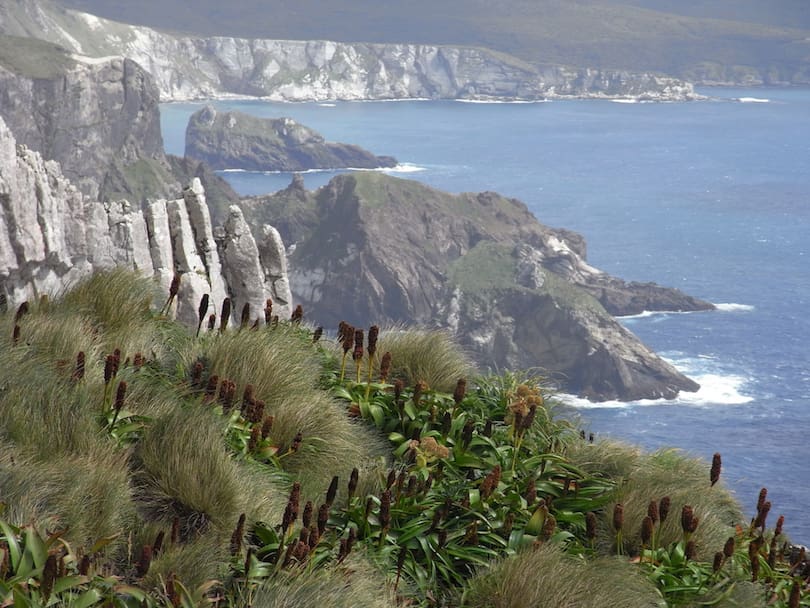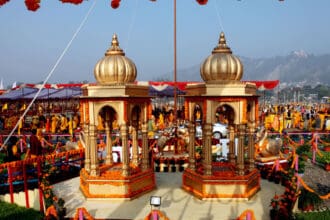Welcome to Gaya, a city of immense spiritual and cultural significance. Located in the Indian state of Bihar, Gaya is a destination that attracts both domestic and international travelers seeking enlightenment, history, and natural beauty. In this article, we will explore the top 10 places to visit in Gaya, each offering a unique experience that will leave you awe-inspired.
Introduction
Gaya is a city deeply rooted in Buddhist heritage, as it is believed to be the place where Gautama Buddha attained enlightenment under the Bodhi tree. With a rich historical and cultural backdrop, Gaya has become a popular pilgrimage site and a treasure trove of ancient temples, caves, and serene landscapes. Let’s delve into the must-visit attractions that make Gaya an enchanting destination for spiritual seekers and history enthusiasts alike.
1. Mahabodhi Temple
a. History and significance
The Mahabodhi Temple stands as a testament to the enlightenment of Gautama Buddha. It is a UNESCO World Heritage Site and one of the oldest brick temples in India. The temple’s history dates back to the 3rd century BC, and its architectural brilliance is a marvel to behold.
b. Architecture and features
The Mahabodhi Temple showcases a blend of Gupta and later-period architecture. The intricate carvings and sculptures depict scenes from Buddha’s life, adding a mystical charm to the surroundings. The majestic 50-meter high central tower dominates the landscape, symbolizing spiritual elevation.
c. Religious significance
For Buddhists worldwide, the Mahabodhi Temple holds immense religious significance. Pilgrims visit to pay homage to the Bodhi tree and meditate in the tranquil atmosphere, seeking enlightenment and spiritual rejuvenation.
2. Bodhgaya Multimedia Museum
a. Exhibits and displays
The Bodhgaya Multimedia Museum offers an immersive experience that takes visitors on a journey through Buddhist history and teachings. The museum houses interactive displays, audiovisual presentations, and artifacts that shed light on the life and teachings of Gautama Buddha.
b. Historical artifacts
The museum’s collection includes ancient scriptures, manuscripts, and relics related to Buddhism. These artifacts offer valuable insights into the evolution of Buddhism and its impact on various cultures.
c. Importance for visitors
Visiting the Bodhgaya Multimedia Museum provides a comprehensive understanding of Buddhism, its philosophy, and its relevance in the modern world. It deepens the connection between visitors and the teachings of Gautama Buddha.
3. Vishnupad Temple
a. Mythological significance
The Vishnupad Temple is dedicated to Lord Vishnu and holds immense mythological importance. It is believed to be the spot where Lord Vishnu placed his foot, leaving behind a footprint embedded in solid rock.
b. Architecture and highlights
The temple’s architecture showcases a blend of Hindu and Buddhist styles. The 30-meter high temple complex is adorned with intricate carvings, and the main shrine houses the sacred footprint.
c. Rituals and festivals
The Vishnupad Temple is a hub of religious activities, especially during festivals like Makar Sankranti and Pitrapaksha Mela. Pilgrims offer prayers and perform rituals to seek blessings and salvation for their ancestors.
4. Dungeshwari Cave Temples
a. Spiritual importance
The Dungeshwari Cave Temples, also known as the Mahakala Caves, hold immense spiritual significance. It is believed that Gautama Buddha practiced self-mortification in these caves before attaining enlightenment.
b. Cave complex and meditation
The cave complex consists of three main caves: Devi, Mahakala, and Sujata. Visitors can explore these caves, meditate in their serene ambiance, and experience the ascetic lifestyle that Buddha embraced during his quest for enlightenment.
c. Legends and stories
According to legends, it was in the Dungeshwari Cave Temples that Gautama Buddha realized the futility of extreme asceticism and adopted the Middle Way, leading to his ultimate enlightenment. The caves bear witness to this pivotal moment in history.
5. Thai Monastery
a. Influence of Thai culture
The Thai Monastery is a beautiful representation of Thai architecture and culture in Gaya. The monastery was built by the Thai government to honor the shared heritage between India and Thailand.
b. Architecture and design
The monastery’s vibrant colors, ornate decorations, and intricate carvings reflect the unique Thai style. The serene meditation hall and the serene Buddha statue provide a tranquil space for introspection.
c. Meditation and serenity
The Thai Monastery offers meditation sessions and retreats, allowing visitors to experience the peaceful ambiance and delve deeper into their spiritual journey. It serves as a sanctuary for those seeking solace and tranquility.
6. Sujata Kuti Vihara
a. Historical background
Sujata Kuti Vihara is named after Sujata, a young woman who offered a bowl of milk rice to Gautama Buddha before his enlightenment. The vihara stands as a tribute to this compassionate act.
b. Connection to Buddha’s journey
Located near the Niranjana River, Sujata Kuti Vihara marks the spot where Gautama Buddha accepted Sujata’s offering and consumed his last meal before embarking on his path to enlightenment.
c. Peaceful ambiance
Surrounded by lush greenery, Sujata Kuti Vihara offers a serene and peaceful ambiance. Visitors can enjoy the tranquility of the surroundings, meditate, and reflect on the significance of selfless acts of kindness.
7. Barabar Caves
a. Ancient rock-cut caves
The Barabar Caves are ancient rock-cut caves that date back to the Maurya dynasty. These caves served as retreats for Jain and Buddhist monks and hold historical importance.
b. Architectural marvel
The Barabar Caves are renowned for their architectural brilliance. The caves feature intricate carvings, polished surfaces, and well-preserved inscriptions that provide insights into ancient Indian craftsmanship.
c. Historical and religious value
The Barabar Caves are significant from both a historical and religious perspective. They represent the early development of rock-cut architecture in India and serve as important pilgrimage sites for followers of Jainism and Buddhism.
8. Muchalinda Lake
a. Legend of the serpent king
Muchalinda Lake holds a fascinating legend associated with Gautama Buddha. According to the story, a severe storm arose while Buddha was meditating near the lake. The serpent king, Muchalinda, protected him from the elements by coiling around him.
b. Scenic beauty and tranquility
The picturesque Muchalinda Lake offers a serene setting, surrounded by lush greenery and serene landscapes. Visitors can enjoy the tranquility of the lake, sit by its shores, and find solace in the peaceful ambiance.
c. Pilgrimage and meditation spot
The Muchalinda Lake is considered a sacred spot by Buddhists, who often visit to meditate and seek spiritual enlightenment. The lake’s natural beauty and association with Buddha’s teachings make it a popular destination for pilgrims.
9. Japanese Peace Pagoda
a. Symbol of peace and harmony
The Japanese Peace Pagoda in Gaya stands as a symbol of peace, unity, and non-violence. Built by Japanese monks, the pagoda aims to promote peace and harmony among people of all backgrounds.
b. Buddhist architecture
The pagoda’s architecture follows the traditional Japanese style, with its white exterior and golden embellishments. The serene atmosphere within the pagoda is conducive to meditation and introspection.
c. Panoramic views
From the top of the Japanese Peace Pagoda, visitors can enjoy breathtaking panoramic views of Gaya and its surrounding landscapes. The view offers a sense of serenity and appreciation for the beauty of the region.
10. Rajgir
a. Historical significance
Rajgir, located near Gaya, holds immense historical significance. It served as the capital of the Magadha Empire and witnessed significant events during the time of Buddha.
b. Hot springs and natural beauty
Rajgir is known for its natural hot springs, which are believed to have therapeutic properties. The town is surrounded by scenic hills, providing opportunities for hiking and exploring the beauty of nature.
c. Rajgir ropeway and attractions
The Rajgir ropeway offers a thrilling ride that takes visitors to the top of Ratnagiri Hill, where they can visit various attractions such as the Vishwa Shanti Stupa and Venu Vana, a bamboo grove associated with Buddha.
Conclusion
Gaya is a city that captivates with its spiritual aura and historical significance. The top 10 places mentioned in this article offer a glimpse into the rich cultural heritage and deep-rooted spirituality of the region. From the Mahabodhi Temple to the serene Japanese Peace Pagoda, each attraction leaves an indelible impression on visitors, fostering a sense of tranquility, introspection, and enlightenment.
FAQs:
- Q: How do I reach Gaya? A: Gaya is well-connected by air, rail, and road. The city has its own airport and a major railway station, making it easily accessible for travelers.
- Q: Is Gaya safe for solo travelers? A: Gaya is generally safe for solo travelers. However, it is advisable to take necessary precautions and be aware of your surroundings, especially in crowded areas.
- Q: Are there accommodation options near the attractions? A: Yes, Gaya offers a range of accommodation options, including hotels and guesthouses, located in close proximity to the major attractions.
- Q: Can I visit all the places in Gaya in a day? A: It is recommended to allocate a few days to explore Gaya fully. Each attraction requires time for exploration, meditation, and embracing the spiritual essence.
- Q: Are there local guides available at the attractions? A: Yes, local guides are available at most of the attractions in Gaya. They can provide detailed information, historical context, and enrich your overall experience.







